- Corrections

What Made Robert Delaunay’s Eiffel Tower Paintings So Famous?
Cubist and Orphist pioneer Robert Delaunay made countless studies of the Eiffel Tower. We look through the reasons why they are so important.

Robert Delaunay was one of the most important artists of the 20 th century. A Cubist and Orphist pioneer, he lived much of his life in Paris , as the city surged and became a cultural mecca in the wake of the industrial revolution. Of all the subjects Delaunay painted, the Eiffel Tower was his most enduring – he made a major series of works based on the Eiffel Tower motif from 1909-1912, and returned to the subject in an entirely new way between 1920 and 1930. But what was it about the tower that so captured his imagination, and kept him hooked for so much of his life? We examine the many reasons for Delaunay’s fascination with the great tower of Paris, which he called the “barometer of [his] art.”
A Symbol of Modern Paris

For Robert Delaunay and many modernists, the Eiffel Tower represented the pinnacle of human achievement during the time in which they were living . Designed by Gustave Eiffel and erected in 1889 for the Paris World Fair, the Eiffel Tower was then the tallest building in the world, soaring over the classical city of Paris with its looming latticed design. Not everyone loved the tower – some even lobbied for its removal – but many saw the great tower as a potent symbol of modernity, representing the pinnacle of human achievement so far.
It came to symbolize Parisian innovation as the city stepped forward into the modern age, a proud beacon of progress, aspiration and invention. For Delaunay, the rise of the machine age was something to be celebrated and embraced, as humanity entered a shiny new era. The Eiffel Tower encapsulated Delaunay’s positive emotions about the dawn of the machine age, as his wife and fellow artist Sonia Delaunay wrote, “The Tower was his liberated muse, his Eve of the future … The Tower addresses the universe.”
A Launchpad for Cubist Abstraction

Get the latest articles delivered to your inbox
Please check your inbox to activate your subscription.
As Robert Delaunay became more adventurous with his art, embracing the rising avant-garde style of Cubism , he explored how the Eiffel Tower could become a launchpad for playing with ideas around fragmentation, dislocation and deconstruction. In his early series of Eiffel Tower paintings, made between 1909 and 1912, Delaunay painted the Eiffel Tower as a series of broken, faceted forms that seem to dissolve into one with the city around it.

He was tireless in his studies of the tower, as Mark Roesenthal, author of Visions of Paris: Robert Delaunay’s Series , explains: “[he] studied it from above, and below, inside and out, from near and far, by day and by night. He absorbed its every mood, perspective, and light effect.” Over time, Delaunay’s Eiffel Tower paintings became more and more abstract, as the tower form disintegrated, and Delaunay increasingly focused on ideas around structure, form and light.
A Focal Point for Studying Light, Color and Movement

By the 1920s Robert Delaunay had moved away from Cubism and instead embraced the style of Orphism , in which he broke real world subjects into vivid, symphonic patchworks of color and light, that suggest energy, movement and sensation. In his later Eiffel Tower series of 1920 to 1930, Delaunay demonstrates this stylistic shift, with geometric panels of color that interlock together into flat, quilt-like patterns. In many of his later Eiffel Tower paintings Robert Delaunay took a different viewpoint, looking down on the tower from the air, onto the ground below.

He based these paintings on aerial photographs taken by Andre Schelchner and Albert Omer-Decugis in 1909 from the basket of a hot air balloon. While Delaunay was still fascinated by the tower as the symbol of French progress and innovation, he also demonstrated how its structural shape was the ideal framework on which to build a bold and innovative new language of pure abstraction.

What Are the Differences Between Orphism and Cubism?

By Rosie Lesso MA Contemporary Art Theory, BA Fine Art Rosie is a contributing writer and artist based in Scotland. She has produced writing for a wide range of arts organizations including Tate Modern, The National Galleries of Scotland, Art Monthly, and Scottish Art News, with a focus on modern and contemporary art. She holds an MA in Contemporary Art Theory from the University of Edinburgh and a BA in Fine Art from Edinburgh College of Art. Previously she has worked in both curatorial and educational roles, discovering how stories and history can really enrich our experience of art.

Frequently Read Together

Robert Delaunay: Understanding His Abstract Art

How Tall is the Eiffel Tower? (Plus 5 Facts to Know)

How Did La Belle Époque Become Europe’s Golden Age?
Advanced Search (Items only)
Robert Delaunay's Eiffel Tower
Robert Delaunay, "Eiffel Tower," 1924. Oil on Canvas, 161.6 cm x 96.8 cm. Saint Louis Art Museum, Saint Louis.
Robert Delaunay, an artist who lived in Paris between 1900 and 1940, is best known for his paintings the Eiffel Tower Series . He painted the first series between 1909 and 1912 and a second series between 1920 and 1930. [i] This painting from 1924 is from the second series where Delaunay paints in a style known as Orphic Cubism, where color is used to envision form through planes and lines of contrasting colors. As Delaunay wrote in his journal, the Eiffel Tower was the “barometer of [his] art,” a symbol of Paris and its success as a modern haven. [ii] Delaunay saw the Eiffel Tower as the pride of France as the country stepped boldly into the modern age. [iii] Like other artists that relayed their urban experiences by painting cityscapes, Delaunay used the structure as a template upon which he conveyed his imagined visions and perceptions of Paris. Unlike the German Expressionists’ typically chaotic and dark paintings of urban scenes, Delaunay’s post-war Eiffel Tower series celebrates the enthusiastic feeling for progress that the modern metropolis would allow. By 1924 Paris was a center of innovation and recreating the Eiffel Tower as he imagined it allowed Delaunay to communicate his own optimism for modern life.
Georges Seurat, "Tour Eiffel,"Oil on Canvas. 24 x 15 cm. The Fine Arts Museum of San Francisco, San Francisco.
Robert Delaunay, influenced by the Post-Impressionists and the Fauvists, transformed the expression of color on canvas by painting the effect of “simultaneous contrasting colors.” [iv] Color, more than any visual element of a painting, can engage the sensation of sight and activate the eye of the viewer. Beginning in the 1880s in Germany and France, artists began manipulating color outside of its accepted purpose as a pictorial element that mirrored pigment, light, and color as it was in reality. Georges Seurat took a scientific approach in applying color theory with his pointillist paintings, while later on the Fauvists began creating imagined forms with flat planes of bright colors. Comparing Eiffel Tower to Seurat’s painting of the monument from 1889, it is apparent that Delaunay’s particular use of certain colors and careful placement thereof to mimic the effects of light on the monument is similar to Seurat’s scientific use of color theory (Figure 1). However, Delaunay has flipped Seurat’s notion of capturing light by varying only application and intensity of a realistic color. Instead, he sought to capture light only through bold and imaginitive Fauvist-inspired pigment.
Robert Delaunay, "Eiffel Tower," 1910. Oil on Canvas, 20 cm x 16 cm. Solomon Guggenheim Museum, New York City.
The more Delaunay painted the Eiffel tower, the more abstracted it became. According to Mark Roesenthal, author of Visions of Paris: Robert Delaunay's Series , by the time Delaunay painted the monument in 1924, the artist had “…studied it from above, and below, inside and out, from near and far, by day and by night. He absorbed its every mood, perspective, and light effect.” [v] Over years of study, he was able to conquer the structure by mastering perspective of the tower from all possible dimensions and aspects. Initially, as in Eiffel Tower 1910, (Figure 2), Delaunay focused on deconstructing the tower in its space so that it emerges from a variety of elements, standing tall in a swirling environment. He paints in Cubist style, choosing to deconstruct via lines and shapes rather than by color. Only once he was able to branch away from Cubism around 1913 and focus on color as the pictorial device to fragment did Delaunay pioneer Orphic Cubism. By his painting in 1924, his shift in style is evidenced by the Eiffel Tower no longer being a singular form emerging from fragmented space but rather as the object of fragmentation itself. As the viewer comes closer to the painting, the Eiffel Tower loses its sense of solidness as a whole form and instead becomes a grid work of shapes and lines. Thus, Delaunay’s fixated study of the Eiffel Tower during his life was due to both an artistic fascination with its form as well as to his perception of the tower as a shining beacon of France’s strength in progress.
View of the Eiffel Tower and Champs de Mars, Paris . Photograph reproduced in Mark Rosenthanl, Visions of Paris: Robert Delaunay’s Series (New York, NY: Guggenheim Museum, 1997), 61.
In Eiffel Tower, painted in 1924, an aerial perspective of the tower and the range of colors used make it seem near at hand, while simultaneously magnificent in its awesome size and vertically stretching orientation. The aerial perspective on the Eiffel Tower creates an aura of grandiosity and heavenward verticality. The top of the tower is cut off and the entire piece framed as if viewed from a higher window. Delaunay paints as if the observer was looking down on the entirety of Paris through a window but could only see the Eiffel Tower, communicating the dominance of the Eiffel Tower over the entirety of Paris as one observes it from above. A contemporary photograph of the monument at the time period from the same perspective illustrates how vertical and domineering the tower truly looked from above (Figure 3). This mobile perspective in Eiffel Tower also implicates the viewer as an observer and the artist as the imaginer, emphasizing that Delaunay’s imagination has ordered the visual elements at his disposal to paint Eiffel Tower .
The range of contrasting colors, Delaunay’s main focus, creates an optical effect where every color zone is pushed forward or backward in space by its neighbor. Delaunay wrote about this idea of simultaneous colors (or simultaneity) as “…a certain combination of colors, in harmonic contrast with each other, can reproduce the movement of light.” [vi] Delaunay realized that light was “actualized through color” and thus when contrasting colors to intensify them one could capture the movement of light that occurred within each hue. [vii] Eiffel Tower combines many complementary and dissonant colors, ultimately each working together so that color has taken over the function of solid form. Additionally, light seems to be reverberating throughout the entire canvas because of the ordered layering of colors. The flatness of the painting only becomes apparent upon close viewing, because the juxtaposition of darker colors with passages of white creates a sculptural sense of recession into space. The colors in Eiffel Tower communicate the vibrancy and dynamism of the urban environment in Paris.
By being “imaginative, not imitative” Delaunay transforms the image of a recognizable monument to a personally relevant image conveying the energy of urbanism and modernity. [viii] The Eiffel Tower was a universal symbol for human growth in the metropolis and a personal connection to innovation Delaunay sought over the course of his career. His pioneering of Orphism culminates the century-long exploration by artists to extract the properties of color and manipulate them to give new meaning to it as a communicator of sensation and thought. In contrast to German Expressionists, Delaunay forgoes personal relevancy to his subject matter in favor of more aesthetic exploration. Meidner and Kirchner could not truthfully embrace a nationalistic identity at a time when Berlin seemed to be collapsing. Instead, they sought to transform thoughts of pessimism on modernity and personal visions of ruin into expressive images of city life and the cityscape of Berlin. Delaunay’s work reflects French optimism in the immediate years after its victory over Germany in World War I; hence he creates a nationalistic piece with a monument to urbanism in Eiffel Tower .
[i] Gustav Vriesen and Max Imadahl, Robert Delaunay: Light and Color (New York, H. N. Abrams, 1969), 66.
[ii] Vriesen and Imadahl, Robert Delaunay: Light and Color . 71.
[iii] William Thompson, “The Symbol of Paris: Writing the Eiffel Tower,” The French Review : 1130-40, accessed February 1, 2015.
[iv] Mark Roesenthal, “Visions of Paris: Robert Delaunay’s Series,” 77.
[v] Roesenthal, “Visions of Paris: Robert Delaunay’s Series”
[vi] Herschel Chipp, “Orphism and Color Theory,” The Art Bulletin: 55-63, accessed February 1, 2015.
[vii] Roesenthal, “Visions of Paris: Robert Delaunay’s Series” 89.
[viii] Vriersen and Imadahl, Robert Delaunay: Light and Color , 88.
Robert Delaunay
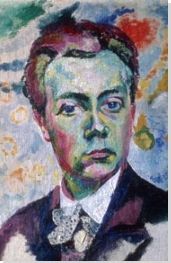
French Painter

Summary of Robert Delaunay
Robert Delaunay's colorful and formally experimental paintings were a unique fusion of early-20 th -century European artistic trends. His best-known works centered on the visually and intellectually stimulating world of Belle Époque Paris in which he and his wife, Sonia Delaunay (Terk) , founded the Orphism movement. The style was distinguished by faceted compositions, vibrant color, and contemporary subject matter that together conveyed delight in the modern life and its technological innovations.
Accomplishments
- Influenced by Neo-Impressionism and the painting technique known as pointillism or divisionism, in his early works Delaunay created forms using squares of color that resembled a mosaic. He often left small areas of canvas blank to create a sense of space and light; even at this stage of development his interest in brilliant color was notable.
- As his style matured, Delaunay further developed his mosaic-like squares into more complex geometric facets in which both solid objects and their surrounding spaces were fragmented, much like Cubism . These canvases are known for their dynamic sense of movement and their celebration of urban life, particularly Paris with Delaunay's oft-repeated motif of the Eiffel Tower.
- Delaunay penned his own theories of color in which he discusses both color as a material form and its great expressive power. He was particularly captivated by how the interaction of various colors generated impressions of movement and depth without allusion to nature. Delaunay wrote that the "breaking up of form by light creates colored planes... [that] are the structure of the picture... nature is no longer a subject for description but a pretext." Eventually, he abandoned "images or reality that come to corrupt the order of color" - thus turning to complete abstraction.
Important Art by Robert Delaunay
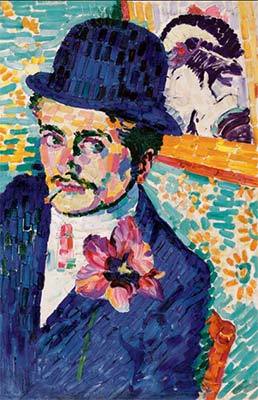
L'Homme à la tulipe (Portrait de Jean Metzinger)
This portrait is one of a series that Delaunay and Metzinger painted of each other during the summer of 1906, many of which have been lost. Delaunay's painting captures both the debonair air of Metzinger and their spirit of collaborative experimentation. This painting shows the influence of Neo-Impressionism and Divisionism on Delaunay's color as well as the influence of artists such as Edgar Degas and Édouard Manet in its unusual perspective. Like Seurat, Delaunay placed complementary and opposite colors adjacent to each other on the canvas rather than mixing paints on the canvas - creating the effect of a hue and the illusion of depth, while giving the works a sense of static classicism. Delaunay was not a slavish follower of Divisionism, however, since his brushstrokes are freer and less precise, and the color is not dictated by nature but is non-naturalistic, indicating Fauvist influences.
Oil on canvas
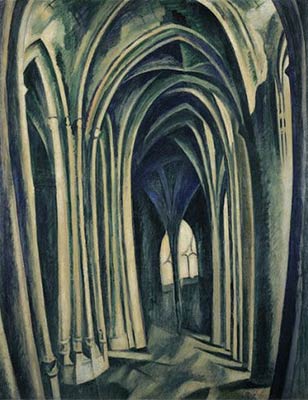
Saint Severin no 3
Saint Severin was the first major series of paintings created by Delaunay in 1909. Focusing on the Gothic ambulatory of this well-known Parisian church, he depicted the view multiple times from the same perspective - looking northeast to capture the effects of changing light as Monet had achieved with his analysis of the exterior of Rouen cathedral. Restricting himself to the subdued palettes the early Cubist works of Picasso and Braque, Delaunay also looked to these artists' use of fragmented planes and distorted form to structure his space. The result is a modern rendering of a Medieval church through a series of repeated arches framed by the cropped composition. Delaunay's technique involved studying the 'reactions of the retina while looking at the sun' - documenting the colors and contrasts created, as well as the distortions in architecture through modulations of light.
Oil on canvas - The Solomon R. Guggenheim Museum, New York, New York
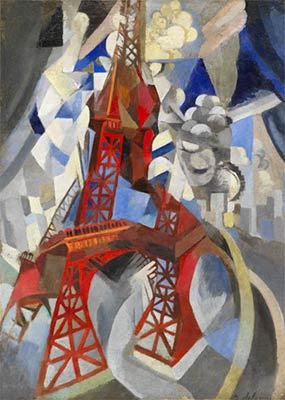
Red Eiffel Tower (La tour rouge)
Delaunay painted his first Eiffel Tower in 1909 to celebrate his engagement to Sonia Terk. He went on to produce around fifteen versions and the tower became a major motif for artists in recognition of the major role that technological development and innovation had on the first part of the 20 th century. The Cubist influence is present in both the fragmented panes of the composition and in the multiple viewpoints of the tower - by looking both up at it's towering height and down on to the smaller buildings. The rich red color is heightened in contrast to the pale blue background, which again emphasises the tower's dominance on the Parisian skyline. His work was described as a synthesis of Impressionism and Cubism but the dynamic robotic-like presence, wing-like forms and plumes of smoke or clouds are more reminiscent of the Futurist project. As Mark Rosenthal noted , 'Delaunay 'effectively replaced the pastoral landscape of the Impressionists with a modern paen of French glory" even reducing his color palette to the red, white, and blue of the French flag.
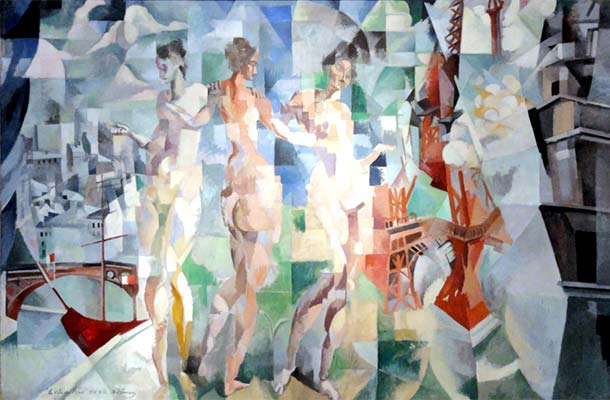
La Ville de Paris
This painting figured prominently in the art world of pre-World War I Paris and was one of the first acquisitions of Jean Cassou, a freelance journalist and later the director of the Museum of Modern Art during the turbulent days of the Socialist Blum government prior to World War II. First shown in the Salon des Independants in 1912, the work caused a sensation and was noted by Apollinaire to be an example of the new movement, Orphism. In 1913, the painting, along with other, smaller compositions, was sent to New York for the now infamous Armory Show. Sadly the work was never shown due to its great scale, causing indignation for the Delaunays and their close circle of friends. As is characteristic of his early work, Delaunay mixes codes and symbols of the city he lived in. Here though, he moves beyond the literal to the allegorical - presenting Paris through a montage of three nude women. The first presents Paris as the historical city, with a view of the Quai du Louvre in the background. The second depicts the classical Paris that is represented by a reference to the Judgment of Paris. The third and final panel is recognizable from Delaunay's previous Eiffel Tower series as the modern metropolis. This painting shows Delaunay's innovative grasp on time and space - themes he would explore further as he moved towards abstraction.
Oil on canvas - Musée National d'Art Moderne, Centre Georges Pompidou, Paris
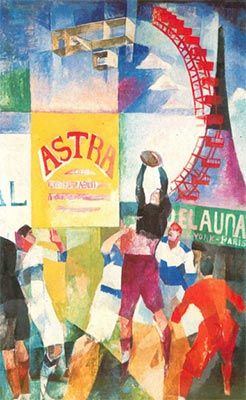
L'Équipe de Cardiff (The Cardiff Team)
For this work, Delaunay drew inspiration from a newspaper image of the Paris-Cardiff rugby match that took place in 1912. He produced several versions of the painting - combining representational elements with a fragmented, Cubist composition that shows the emergence of contrasting color planes and geometric forms of his later work. The motifs he employs all work to illustrate the visual landscape of pre-war Paris- branded hoardings, the Big Wheel, and the Eiffel Tower rising up majestically in the background. Off to one side, partially concealed and disguised as an advertising slogan, is Delaunay's name. The inclusion of visual and written symbols in the painting point to significant themes that were to preoccupy the artist throughout his career- the depiction of movement, technology, sport, and placing himself as a central figure within this dynamic new world.
Oil on canvas - Musée d'Art Moderne de la Ville de Paris, Paris
![tour eiffel by robert delaunay Simultaneous Windows (2nd Motif, 1st Part) (Les fenêtres simultanées [2e motif, 1re partie]) (1912)](https://www.theartstory.org/images20/works/delaunay_robert_6.jpg?1)
Simultaneous Windows (2nd Motif, 1st Part) (Les fenêtres simultanées [2e motif, 1re partie])
The Simultaneous Windows series are Delaunay's last semi figurative works before he began experimenting with complete non-objectivity. Here we are looking through a window - the outline of the Eiffel Tower reveals itself beneath fragmented color panes, creating an illusion of depth along with the kaleidoscopic effect that was characteristic of Orphism. The palette is bright and the fluid blocks of color give the illusion of softness and movement. In 1911, Sonia had created a patchwork blanket for their son that famously inspired these works. The Windows series is characterized by a forward thinking and Futurist aesthetic but Delaunay also drew on earlier movements, the motif of looking through windows could be seen in works of the Impressionists and Fauvists and could also have been inspired by the Symbolist concept of a window onto the soul.
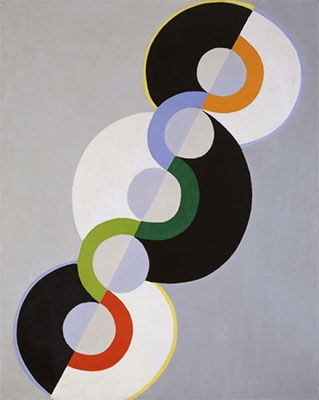
Endless Rhythm (Rythme sans fin)
Endless Rhythm was named by Sonia Delaunay as a way to describe the cyclical looping effect of the circular forms that seem to mimic the flow of electric currents. By 1930 Delaunay had returned to abstraction, producing the large spinning disc compositions for which he is perhaps best known. Building on his earlier experiments, Delaunay achieved the illusion of movement through juxtaposition of colors with geometric form. Delaunay carefully selected his colors to present subtle gradients and then contrasts these with the thick black and pale blue background. The diagonal composition enhances the effect of dynamism. A year after this painting was produced, the discs were brought to life on a monumental scale in his public murals for the Paris exposition.
Oil paint on canvas - Collection of the Tate, United Kingdom
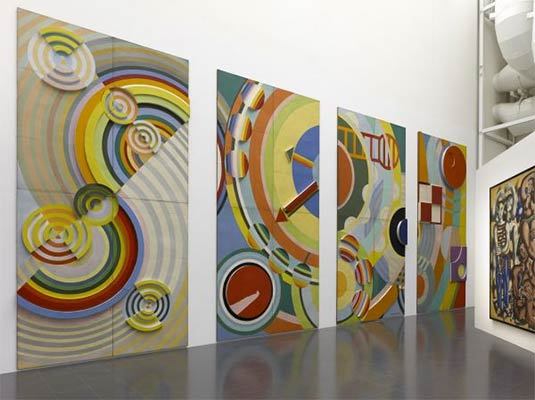
Entrée du Hall des réseaux du palais des Chemins de fer
In 1937 the Delaunays began a new and very different project that would occupy them for almost an entire year when they were commissioned to create a series of murals for the Railway Pavilion and the Air and Aeronautics Pavilion at the Paris Exposition in collaboration with a team of painters. The theme that year was art and technology in modern life. In response,Delaunay chose to recreate the results of his earlier experimentation with simultaneity and chromatic color - this time on an unprecedented scale. Each panel took a different form; inspired by his earlier work in sand, stone, and sculpture. Delaunay imagined repetitive forms, conflicting shapes and endless color palettes to set the room in motion, in homage to new visions of the world afforded by technological innovations. The murals were hung in the entrance to the Musée d'Art Moderne in 1977 in honor of Delaunay's earlier contributions to abstract art.
Centre Pompidou, Musée national d'art moderne, Paris
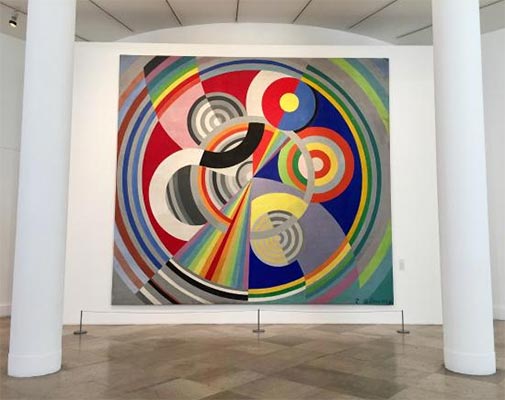
Propelled on by the success of the Exposition commission, a year later Delaunay produced another major commission, this time for the Salon de Tuileries. Again reminiscent of aeroplane propellers, and the swirls and plumes that surround them in motion, this painting evokes the artist's love of speed and technology, as well as his renewed commitment to pure abstraction. It also illustrates his application of color theory. By using the large scale he had become comfortable with, Delaunay heightened the visual sensation of the work by creating simultaneous form and depth rather than descriptive reality. This was to be Delaunay's last major piece before the couple fled Paris for the south of France, where Robert died a premature death just three years later.
Oil on canvas - Centre Pompidou, Musée national d'art moderne, Paris
Biography of Robert Delaunay
Robert Delaunay was born in 1885 to eccentric upper class parents, George Delaunay and Berthe Félicie de Rose. His mother, an irresponsible character fond of society life, called herself 'Countess' though the authenticity of her claims to French aristocracy are in question. His early life in Paris was privileged yet strained - his parents divorced when Delaunay was just four years old and he barely saw his father after this. Taken in by his aunt and uncle, he was raised in a grand estate in La Ronchère near Bourges, by coincidence mirroring the childhood experience of his future wife, Sonia, also brought up by a wealthy uncle and aunt in St Petersburg.
Early Training
The young Delaunay was a lackluster student, spending classes painting with watercolors behind his desk lid. He lacked formal artistic training, but was sent by his uncle to Ronsin's Atelier, to apprentice in theatre design at Belleville. Here he learned to create large scale theatre sets, which would inform his later stage and mural work.
In 1903 Delaunay traveled to Brittany, where he became acquainted with Henri Rousseau and turned to painting, inspired initially by the work of the Pont Aven Group who had painted there from 1886-88. On returning to Paris, Delaunay met artist, Jean Metzinger . The two became close friends and produced a series of small mosaic-like compositions inspired by the Divisionist techniques of Georges Seurat . Their experiments were noted in an article by the critic Louis Vauxcelles in 1907.
In 1909 Delaunay chanced upon a passionate young artist named Sonia Terk, who went on to become his wife and collaborator for the next 30 years, forming one of the most remarkable creative partnerships in art history. A wealthy Russian emigre who had recently come to Paris to train at the Academy de la Palais, Terk was already married to the homosexual German art critic and gallery owner, Wilhelm Uhde in a marriage of convenience. She and Robert began a passionate affair and when she became pregnant, Uhde willingly consented to a divorce. She married Delaunay the following year and quickly realized that the impetuous and childlike Delaunay would not be a conventional husband or father: for the majority of their married life, she would be the main breadwinner for their family. The newlyweds rented an apartment on the Rue des Grandes Augustins, the same street where Pablo Picasso lived, and embraced the exciting new world around them. They painted together, drawing inspiration from the vivid colors and patterns they saw in the electric lights on the Boulevard St Michel, where they strolled in the evenings.'We breathed painting like others lived in alcohol or crime,' Sonia was to later write in her diary.
Mature Period
Pre World War I Paris was at the epicenter of the avant-garde movement. Delaunay immersed himself in the world of aesthetic discovery, innovation, and experimentation that was exploding around him. He exhibited alongside many of the key players in Paris at the Salon D'Automne (1903,1906) and at the Salon des Independants from 1904 -14, developing an increasing fascination with color as a subject in itself. He sought to interpret the modern city through color and rhythm. In 1911, Sonia gave birth to their only son, Charles, and a year later, at age 27, Delaunay had his first solo show at the Galerie Barbazanger in Paris. His work was admired by German Expressionists Wassily Kandinsky , August Macke and Franz Marc . In 1912, he was invited by Kandinsky to exhibit at the first Blaue Reiter exhibition in Germany, as well as to contribute to Der Sturm , the prestigious almanac produced by the group.
Delaunay believed in gestural, grandiose painting and would have frenzied periods of productivity, working from dawn till dusk, sometimes not bathing for days. In between these bouts, he would not touch a brush, instead taking long walks and taking care of his plants. His Eiffel tower series painted during this time gained considerable attention from the art world, leading to inclusions in major exhibitions and group shows in Europe, notably in the Cubist Room at the Salon des Independents with Metzinger. Following this show, his work became increasingly non-objective leading to the emergence of motifs that Delaunay is known for today such as spinning circles and the geometric forms of his windows. In response to his work, critic Andre Warnod wrote of a 'blossoming new school' that broke with the art of Cubism. The same year his close friend and poet, Guillaume Apollinaire , coined the term 'Orphism' to describe Delaunay's paintings, as well as those of Sonia and artist, Frantisek Kupka. The name, derived from the Greek mythological lyre-playing Orpheus likened the painters' energy to a primal urge for creation. Apollinaire also wrote that Picasso occupied one camp and Delaunay the other - with Kandinsky and Duchamp as his followers. This over embellishment of his achievements caused a stir. In fact, Delaunay preferred to call his work 'simultaneous' rather than 'orphic', as he felt this evoked the spirit of the new age, but this too caused controversy for Delaunay as the Italian Futurists claimed this concept as their own.
Though Delaunay had gained support for his work, his attention-seeking, outspoken personality was exhausting and Sonia often had to mediate when he antagonized others with egocentric claims such as 'before me color was only coloring'. Gertrude Stein captured his personality succinctly when she wrote: 'he sees himself as a grand solitary figure when in reality he's an endless chatterbox who will tell anyone about himself and his significance any time of day or night'. During this period, Delaunay's short temper alienated both students and colleagues.
On Sundays the Delaunay's opened up their home to artists, poets, musicians, and writers that included Henri Rousseau, Metzinger, Guillaume Apollinaire, Fernand Léger , Albert Gleizes, Henri Le Facconnier, and Blaise Cendrars. On Thursdays the group would dance at the Bal Bullier in Montparnasse, turning up late to make an entrance wearing the outlandish simultaneous designs created by Sonia. The Delaunays were always center stage with Sonia in elaborate multi colored dresses and Robert in matching suits of scarlet, green, and other garish colors. The group would also wear multi colored socks so they could dance the tango with no shoes. Their outfits were described as 'Futuristic' by Giacomo Balla and attracted international media attention; Sonia's designs were described by Apollinaire as turning 'fantasy into elegance'. Like the Futurists, Robert was obsessed with the new era of technology and speed, and would frequently visit the St Cloud airship outside Paris. From here came the inspired work 'Homage to Bleriot' in 1914- an 'allegory of the new age' as well as an illustration of his theory that color could become form and subject.
The Delaunays were on vacation when World War I broke out in August 1914, but unlike the others in their circle they stayed as far from the fighting as possible, firstly in Portugal then in neutral Northern Spain. Robert did finally enlist in 1916, but was declared unfit for service due to a large heart and collapsed lung. In 1917, Sonia's income was cut off at the outbreak of the Russian Revolution and she turned to fashion design to provide for her family, setting up her own boutique, Casa Sonia. This proved a lucrative period for both artists when Robert met the Russian exile, Sergei Diaghilev and the rest of the Ballet Russes, which had been somewhat depleted by war. Robert was commissioned to design and make the stage set for their next performance while Sonia created the costumes.
In 1920 the Delaunays returned to Paris, where Sonia established herself as a successful fashion designer, so Robert could pursue his art. They rented a grand apartment and resumed their Sunday salons - pulling in a new group of young artists including Tristan Tzara , Francis Picabia , André Breton , Jean Cocteau , and Jean and Sophie Arp . The apartment became a living, breathing simultaneous artwork as their Dada and Surrealist friends adorned the walls with paintings, poems, and signatures. However, as always they were living beyond their means and bailiffs were frequent visitors to the apartment; in 1922 money was so tight that Sonia had to sell their Henri Rousseau painting The Snake Charmer to the Louvre for 50,000 francs. With this Robert bought their first car, and in doing so found the one pastime that would relax him - driving. The Delaunays were known for their progressiveness- owning a car, telephone, and radio before any of their friends as well as being the first to re-establish links with German artists after World War I. However, artistically Robert was lagging behind his entrepreneurial wife - he had not exhibited since 1913 except for a solo show in 1922 that had little success despite the loyal attendance of his new Surrealist friends.
Late Years and Death
By the mid 1930s, Robert's reputation had dwindled and he was in a cycle of producing unfinished works that lacked conviction. He spent time conducting his, what seemed to be fruitless, research into developing new pigments and using stone and sand to make lacquer. During the late 1920s he had turned to figurative work, then back to complete abstraction. A low point was the creation of a nude for the lounge of the embassy room at the Exposition Universale of 1925, which was deemed inappropriate and taken down. The same year they both turned 40 and Sonia - now a very successful designer who ran 30 boutiques, began to pine for the painting of her earlier career. Robert encouraged this return to intellectual curiosity saying, ' to produce is great, but we must also promote our ideas'. With the crash of Wall Street in 1929, fashion couture declined as it became 'bad taste to look rich'. Sonia made the decision to close her boutique and the couple gave up their apartment, declaring 'We'll paint and we'll live like before'.
Money was tight and both artists were encouraged to register for unemployment by friends, but Robert's pride prevented this. The couple joined the Abstraction Creation group in 1932 and four years later were invited to take part in the Exposition Internationale des Arts et Techniques dans la Vie Moderne of 1937, with an emphasis on public art. Robert took charge of the project, working with fifty unemployed artists in a large garage to produce huge murals for the aeronautical pavilion, with the theme of the romance of railway travel. During this period they 'lived like monks' according to Sonia, with Robert showing a renewed energy and commitment to the project. His previous experiments with stone proved to be invaluable as he developed ways to produce murals that were resilient to the elements. The show was a success, and Robert's pavilion received very positive reviews by those who saw it. However, it was overshadowed by the overwhelming success of Picasso's Guernica in the same show - adding fuel to the longstanding envy he had for the Spanish artist.
The International Exposition brought the Delaunays back in demand and a year later, Robert produced what would be his last series- decorations for the Sculpture Hall at Salon des Tuileries. With these successes behind them, the couple made exciting plans to travel to New York, but timing was against them and with World War II looming they fled to the South of France to avoid the Nazi invasion. The move was detrimental to Robert's deteriorating health and he died from cancer in 1941 in Montpellier, France. Sonia went on to live for another thirty years, and with their son, Charles, managed Robert's estate, and paid tribute to Robert's memory through her work.
The Legacy of Robert Delaunay
Robert Delaunay's reputation fluctuated throughout his life and after his death, so it is a challenge to map his legacy in modern art history. However, it is without a doubt in the heady pre-World War I days that his influence on other artists and writers was most pronounced. His text 'Note on the Construction of Reality in Pure Painting' (1912) was seen by many critics as fundamental in the evolution of abstract art theory; in one article Apollinaire even credits Delaunay with influencing Picasso's use of light. Whether or not this was entirely accurate, it is certain that during 1912-13 Delaunay was seen by many as occupying a contradictory and equivocal position in relation to Cubism, something which inspired young artists looking for new directions. One such example was the young American, Morgan Russell, who saw the vibrant color harmonies of Delaunay's canvases in 1912. Soon afterwards, Russell founded the Synchronist movement with Stanton McDonald Wright, which expanded on the color theory of Michel Chevreul and Ogden Rood, as Delaunay himself had done. Later however, Russell and Wright denied all connections with Orphism.
Similarly contentious was Delaunay's relationship to Futurism . His incorporation of modern architecture into a fragmented, dynamic pictorial space suggests a role in the development of Futurist visual language, particularly evident in Umberto Boccioni 's Simultaneous Visions (1912). The Italian artist had in fact visited Paris in 1911 and would have seen Delaunay's Saint Severin and Eiffel Tower series. At the time both movements rejected any comparison but after the artist's death, Fernand Leger was to declare 'It was with Robert Delaunay on our side that we joined the battle' [towards abstraction] (1949).
After Delaunay exhibited his work at the first Der Blaue Reiter exhibition, he caused a stir : the blocks of vivid color Klee went on to employ in his Tunisian watercolors (1914) are reminiscent of Delaunay's Windows series, and critic, Theodore Daubler, actually referred to him as the 'first known Expressionist' in 1916. Other commentators point to links with Die Brucke . For Mark Rosenthal, the distorted expressionist forms in Delaunay's Saint Severin can be clearly seen in the art of Lyonel Feininger, Ernst Kirchner's street scenes, and in the film sets for Robert Weine's Cabinet of Dr Caligari (1920).
Delaunay's close connections with Kandinsky, Hans Hoffman, and Diego Rivera during his lifetime also suggest a possible link with Abstract Expressionism, as these were all prominent figures in the development of the New York School in the 1940s. Delaunay's innovative use of encaustic wax (developed when he had no access to art materials in Spain), large scale architectural painting ( The City of Paris , the 1930s murals) and color as a vehicle for expression can be indirectly linked to the work of Jackson Pollock , Barnett Newman , and Mark Rothko .
By 1945, just four years after his death, Delaunay's name was virtually unknown. His wife, Sonia, was by then well-established in her design career and she worked tirelessly to restore her late husband's reputation as a pioneer of abstract art. She persuaded galleries to show his work and in 1963 donated 114 of his works to the Musée d'Art Moderne in Paris, helping to place his name back in the public consciousness. However, it is in her vast body of work where his most direct legacy lies. She kept their shared theories of simultaneity alive through her prolific production of clothing, household objects, book binding, fabrics, and painting, all characterized by colorful abstract forms that were reminiscent of Robert's earlier Orphic works.
Influences and Connections

Useful Resources on Robert Delaunay
- 1906-1914 De L'Impressionisme a L'Abstraction By Pascal Rousseau, Jean-Paul Ameline
- The New Art of Color (The Documents of 20 th -century art) Our Pick By Robert Delaunay, Sophie Delaunay, and Arthur A. Cohon
- Robert Delaunay: Light and Color By Gustav Vriesen, Max Imdhal, and Maria Pelikan
- Robert and Sonia Delaunay: The Triumph of Color By Hajo Duchting, Robert Delaunay, and Sonia Delaunay
- Resisting Abstraction: Robert Delaunay and Vision in the Face of Modernism Our Pick By Gordon Hughes
- Online collection
- Envisioning Abstraction: The Simultaneity of Robert Delaunay's First Disk Our Pick By Gordon Hughes / The Art Bulletin / 2007
- Sonia Delaunay Our Pick By David Seidner / BOMB Magazine / July, 1981
- Robert Delaunay, "Simultaneous Contrasts: Sun and Moon" The Khan Academy
- Archive Grid Papers relating to Sonia and Robert Delaunay, c. 1960-81
Similar Art
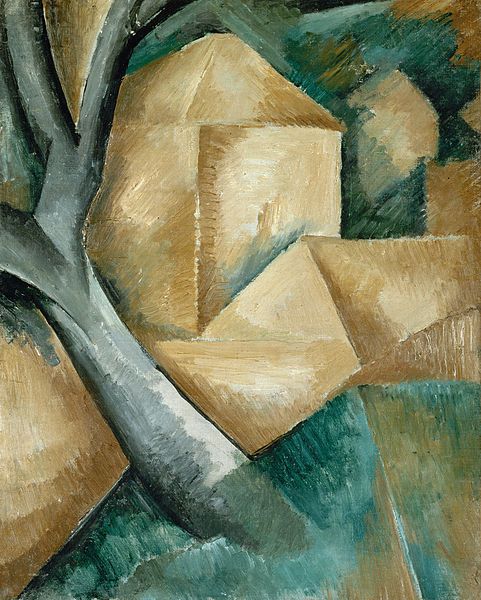
Houses of l'Estaque (1908)
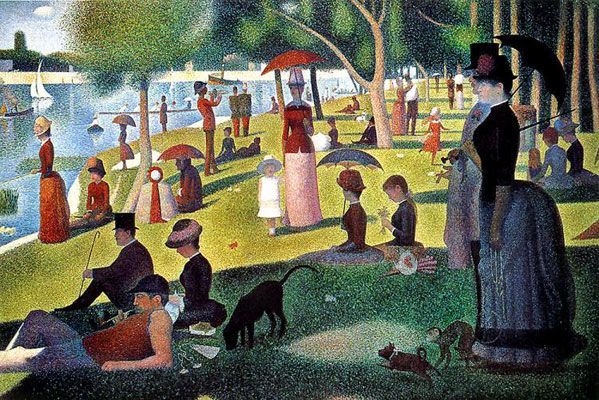
Sunday Afternoon on the Island of La Grande Jatte (1884-86)
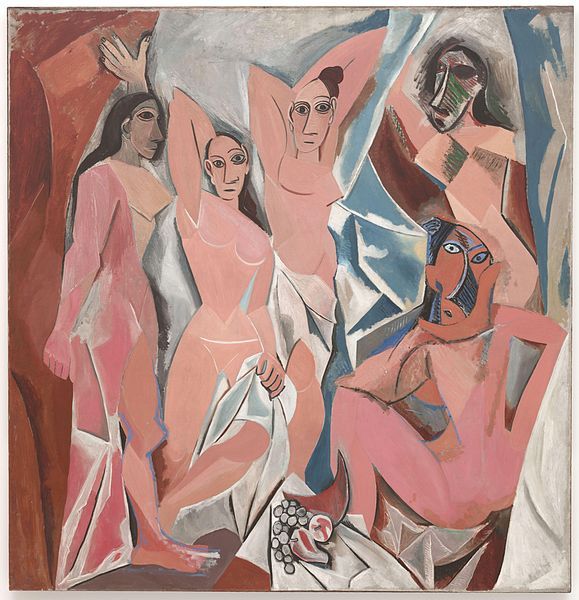
Les Demoiselles d'Avignon (1907)
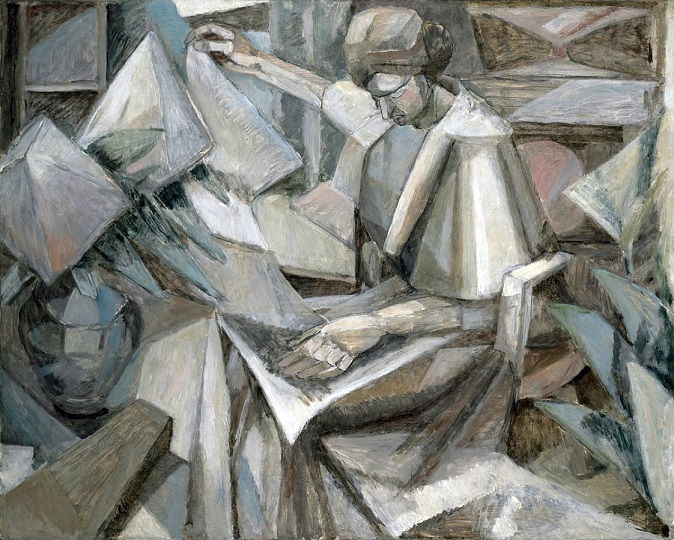
Woman with Phlox (1910)
Related artists.

Related Movements & Topics

Content compiled and written by Sarah Jenkins
Edited and published by The Art Story Contributors
Neue Nationalgalerie
Staatliche Museen zu Berlin

"Eiffel Tower" by Robert Delaunay (1928)
Robert Delaunay created the large-scale painting Eiffel Tower, the last in a series, in Paris in 1928. Colourfully depicting the Eiffel Tower in Paris from a bird’s eye view, it was inspired by photographs taken from aeroplanes. The Eiffel Tower virtually becomes a rocket, seeming to take off from the earth. An advanced state of ageing, numerous revisions, soiling and old restorations, as well as a now cloudy finish, prompted the conservation and restoration of the painting for its prominent inclusion in the Neue Nationalgalerie’s inaugural reopening exhibition .

Robert Delaunay at work on Eiffel Tower, 1928 © Germaine Krull
Hana Streicher during restoration of Robert Delaunay’s Eiffel Tower © Staatliche Museen zu Berlin, Nationalgalerie / Ina Hausmann

The work environment for the restoration of Robert Delaunay’s Eiffel Tower © Staatliche Museen zu Berlin, Nationalgalerie / Hana Streicher
The painting exhibited an overall diffuse and noticeably uneven visual effect because of surface soiling and the partially milky (i.e. blanched) and irregularly applied finish coat that covered the colourful work like a grey smear. There were numerous areas with loosened layers of paint across the work’s entire surface.
The restoration objective was to secure all areas of the paint layer threatened by separation and to give the painting a cohesive and visually aesthetic overall impression.
The measures were accompanied by extensive art-technological examinations such as macro and microscopic inspections under visible light as well as UV excitation, sampling and analyses.
Intermediate stage of surface cleaning © Staatliche Museen zu Berlin, Nationalgalerie / Hana Streicher

Overall view under UV excitation © Staatliche Museen zu Berlin, Nationalgalerie / Hana Streicher

Detail, showing clear streaks in the finish © Staatliche Museen zu Berlin, Nationalgalerie / Hana Streicher
The deterioration of the finish or varnish known as blanching appears opaque white and can, in some cases, be regenerated with the help of solvents. Such interventions must be carefully considered to achieve the desired effect and avoid any damage to the original substance. In Delaunay’s Eiffel Tower , the original appearance was severely distorted by soiling and blanching. Thanks to the measures carried out by the restorer, the painting has regained its readability.
Detail with blanching before (left) and after (right) the regeneration © Staatliche Museen zu Berlin, Nationalgalerie / Hana Streicher und Ina Hausmann
Project management: Hana Streicher, Restoration department of the Neue Nationalgalerie Planning / Coordination: Hana Streicher Implementation: Hana Streicher und Ina Hausmann Duration: 2020
About Cookies
This website uses cookies. Those have two functions: On the one hand they are providing basic functionality for this website. On the other hand they allow us to improve our content for you by saving and analyzing anonymized user data. You can redraw your consent to using these cookies at any time. Find more information regarding cookies on our Data Protection Declaration and regarding us on the Imprint .
We use cookies to provide a more personalized website experience. By clicking “I Accept” you consent to all cookies. Click “I Decline” to continue with essential cookies only.
Learn about how we use cookies
We will keep fighting for all libraries - stand with us!

Internet Archive Audio

- This Just In
- Grateful Dead
- Old Time Radio
- 78 RPMs and Cylinder Recordings
- Audio Books & Poetry
- Computers, Technology and Science
- Music, Arts & Culture
- News & Public Affairs
- Spirituality & Religion
- Radio News Archive

- Flickr Commons
- Occupy Wall Street Flickr
- NASA Images
- Solar System Collection
- Ames Research Center

- All Software
- Old School Emulation
- MS-DOS Games
- Historical Software
- Classic PC Games
- Software Library
- Kodi Archive and Support File
- Vintage Software
- CD-ROM Software
- CD-ROM Software Library
- Software Sites
- Tucows Software Library
- Shareware CD-ROMs
- Software Capsules Compilation
- CD-ROM Images
- ZX Spectrum
- DOOM Level CD

- Smithsonian Libraries
- FEDLINK (US)
- Lincoln Collection
- American Libraries
- Canadian Libraries
- Universal Library
- Project Gutenberg
- Children's Library
- Biodiversity Heritage Library
- Books by Language
- Additional Collections

- Prelinger Archives
- Democracy Now!
- Occupy Wall Street
- TV NSA Clip Library
- Animation & Cartoons
- Arts & Music
- Computers & Technology
- Cultural & Academic Films
- Ephemeral Films
- Sports Videos
- Videogame Videos
- Youth Media
Search the history of over 866 billion web pages on the Internet.
Mobile Apps
- Wayback Machine (iOS)
- Wayback Machine (Android)
Browser Extensions
Archive-it subscription.
- Explore the Collections
- Build Collections
Save Page Now
Capture a web page as it appears now for use as a trusted citation in the future.
Please enter a valid web address
- Donate Donate icon An illustration of a heart shape
La tour Eiffel
Bookreader item preview, share or embed this item, flag this item for.
- Graphic Violence
- Explicit Sexual Content
- Hate Speech
- Misinformation/Disinformation
- Marketing/Phishing/Advertising
- Misleading/Inaccurate/Missing Metadata
![[WorldCat (this item)] [WorldCat (this item)]](https://archive.org/images/worldcat-small.png)
plus-circle Add Review comment Reviews
14 Previews
DOWNLOAD OPTIONS
No suitable files to display here.
PDF access not available for this item.
IN COLLECTIONS
Uploaded by station34.cebu on February 22, 2023
SIMILAR ITEMS (based on metadata)
Robert Delaunay
La Tour Eiffel

Robert Delaunay (1885, France - 1941, France)
Emblème de la modernité, la tour métallique construite par Gustave Eiffel en 1889 fascine Delaunay et traverse tout son œuvre. Après l'avoir désarticulée dans une importante série cubiste au début des années 1910, l'artiste magnifie la tour Eiffel dans une gamme de couleurs flamboyantes soulignée par un puissant effet de contre-plongée, souvent adopté par les photographes de l'époque.L'armature ajourée de l'édifice s'élance comme un pont vers le ciel. Les couleurs des aplats géométriques dont la tour est revêtue confèrent à cette peinture une allure décorative affirmée.
- Paris (ville)
- Tour Eiffel (Paris) (représentée)
- forme géométrique
Crédit photographique : Centre Pompidou, MNAM-CCI/Hélène Mauri/Dist. RMN-GP /Dist. RMN-GP
Réf. image : 4Y03736
Diffusion image : l'Agence Photo de la RMN

Informations détaillées
De la/du même artiste.
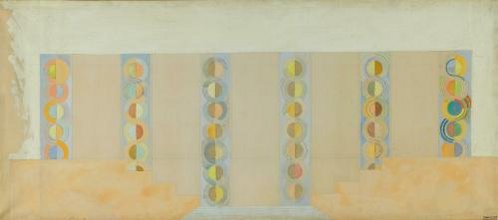
Esquisse pour la décoration de l'escalier du Palais des Chemins de fer…
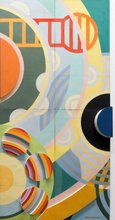
Entrée du Hall des réseaux
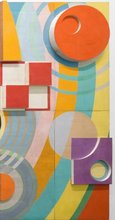
Le poète Philippe Soupault
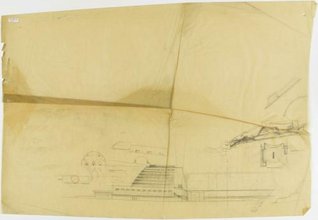
Félix Aublet, Robert Delaunay
Élévation et croquis
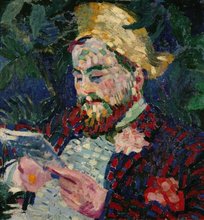
Portrait d'Henri Carlier
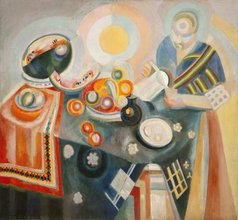
La Verseuse
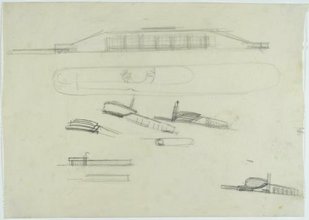
1936 - 1937
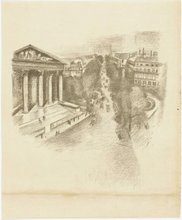
La Madeleine et les Boulevards
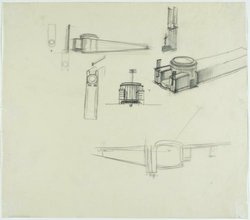
Croquis de femme en robe longue
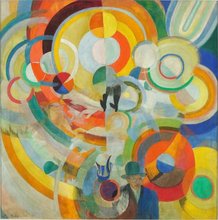
Manège de cochons
Art et architecture en Europe 1870-…
Images et imaginaires de l'architecture
La Donation Sonia et Charles Delaunay
à l'Atelier Brancusi
Bibliographie
Liens externes.
La collection du Musée national d’art moderne
Where next?
Explore related content
The Eiffel Tower
Robert delaunay 1909/1910, staatliche kunsthalle karlsruhe karlsruhe, germany.
Robert Delaunay (1885-1941) retained a muted palette of brown and grey hues in his painting of "The Eiffel Tower" (1909/10). In this colour scheme and his artistic contemplation of multiple viewpoints of objects, the influence of the analytic Cubism of Pablo Picasso (1881 - 1973) and Georges Braque (1882-1963) is visible. Delaunay's formal language resulted from the extension and acceleration of perception, the cognitive qualification of the real through multiple changes in perspective, which lead to a new unity in the image. The dizzying tower , buckled and fractured, yet majestically tall, takes up the entire height of the painting. Below, the steel construction straddles scenery-like rows of houses up to the vertical edges of the painting. Above, the tower thrusts through the cover of white-grey round cumulous clouds.
This work might seem like the anticipation of the demolition of this monument to modernity, and indeed, the removal of the Eiffel Tower was under discussion in 1909. However, Delaunay's painting is a dynamic agglomeration, meant to nobly embrace this symbol of the launch into a new technical era. Through the dynamic transformation of the painting's surface, especially through the use of colour, Delaunay arrived at his window paintings, which inspired French poet Guillaume Apollinaire to coin the term, "Orphism" for Delaunay's art. No longer working in a divisional mode like Severini, Delaunay became a singer of light, who concerned himself with the theoretical effects of socalled simultaneous contrasts. Practically, he transformed his motifs into a circling motion of glowing discs of colour, as in the small painting, "Crime of Passion (Political Drama)" (1914), which also belongs to the Kunsthalle collection.
- Title: The Eiffel Tower
- Creator: Robert Delaunay
- Creator Lifespan: 1885 - 1941
- Creator Nationality: French
- Date Created: 1909/1910
- Location Created: France
- Physical Dimensions: 116 x 81 cm
- Subject Keywords: Eiffel Tower , Tower , Paris , Seine, Gustave Eiffel, Engineer, Architecture , Urban, City, World's fair, Modernism, Avantgarde, Cityscape, Vedute, Cubism, Expressionism, Monument
- Type: Painting
- Publisher: Staatliche Kunsthalle Karlsruhe (State Art Gallery Karlsruhe)
- External Link: The Eiffel Tower
- Medium: Oil on canvas
- Art Genre: Vedute, Architecture
- Art Movement: Modern Art , Modern Era, Cubism
- Support: Canvas
- Depicted Location: Eiffel Tower, Paris, France
- Depicted Topic: Architecture, Cityscape
Get the app
Explore museums and play with Art Transfer, Pocket Galleries, Art Selfie, and more

- The Collection
- The American Wing Ancient Near Eastern Art Arms and Armor The Michael C. Rockefeller Wing Asian Art The Cloisters The Costume Institute Drawings and Prints Egyptian Art European Paintings European Sculpture and Decorative Arts Greek and Roman Art Islamic Art Robert Lehman Collection The Libraries Medieval Art Musical Instruments Photographs Antonio Ratti Textile Center Modern and Contemporary Art
Crop your artwork:
Scan your QR code:
Gratefully built with ACNLPatternTool
The Eiffel Tower
Robert Delaunay French
Not on view
Due to rights restrictions, this image cannot be enlarged, viewed at full screen, or downloaded.
Open Access
As part of the Met's Open Access policy , you can freely copy, modify and distribute this image, even for commercial purposes.
Public domain data for this object can also be accessed using the Met's Open Access API .
- https://www.metmuseum.org/art/collection/search/821901 https://www.metmuseum.org/art/collection/search/821901 Link copied to clipboard
- Animal Crossing
- Download image
- Enlarge image
Artwork Details
Use your arrow keys to navigate the tabs below, and your tab key to choose an item
Title: The Eiffel Tower
Artist: Robert Delaunay (French, Paris 1885–1941 Montpellier)
Medium: Lithograph
Dimensions: Sheet: 11 in. × 8 15/16 in. (28 × 22.7 cm)
Classification: Prints
Credit Line: The Elisha Whittelsey Collection, The Elisha Whittelsey Fund, 1975
Accession Number: 1975.606.6
Learn more about this artwork
Related artworks.
- All Related Artworks
- By Robert Delaunay
- Drawings and Prints
- Lithographs
- Planographic prints
- From A.D. 1900–present
La Place de l'Etoile
Saint-Severin
The runners.
Study for "Portuguese Woman Pouring"
Stage Design for Cleopatra

How Lithographs are Made
Resources for research.
The Met's Libraries and Research Centers provide unparalleled resources for research and welcome an international community of students and scholars.
The Met Collection API is where all makers, creators, researchers, and dreamers can connect to the most up-to-date data and public domain images for The Met collection. Open Access data and public domain images are available for unrestricted commercial and noncommercial use without permission or fee.
We continue to research and examine historical and cultural context for objects in The Met collection. If you have comments or questions about this object record, please complete and submit this form . The Museum looks forward to receiving your comments.

Drawings and Prints at The Met
Currently not on view
Eiffel Tower
This tall, narrow canvas presents the Eiffel Tower rising above historical sites and monuments of Paris, and crowned by vortices of red, yellow, blue, and green. Robert Delaunay derived the attenuated nude figure on the left from a postcard showing an ancient fresco of the Three Graces in a Naples museum. The figure stands for classical beauty in juxtaposition with the modern tower. Through repeated renderings, the Eiffel Tower became not only a personal emblem for the artist but also the incarnation of the ethos he called Simultanism, which affirmed a fusion of the creative mind with the experience of modern life, rooted in industrial architecture, mass communication, and the metropolis. Delaunay infused those modern subjects with the dynamism of bold color contrasts.
This picture was a study for a panel that adorned an architectural project at the 1925 Paris International Exposition, which popularized the modern design style of Art Deco.
We are always open to learning more about our collections and updating the website. Does this record contain inaccurate information or language that you feel we should improve or change? Contact us here .
Please note that this particular artwork might not be on view when you visit. Don’t worry—we have plenty of exhibitions for you to explore.
Eiffel Tower
Related content, exalted color: the art and fashion of sonia delaunay.
Masterpiece Story: The Red Tower by Robert Delaunay
James W Singer 2 April 2024 min Read
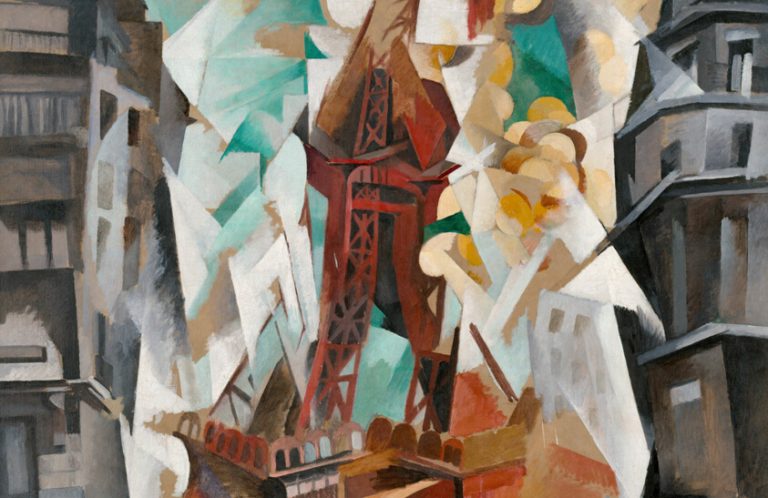
Robert Delaunay, Champs de Mars: The Red Tower , 1911-1923, Art Institute of Chicago, Chicago, IL. Detail.
Recommended
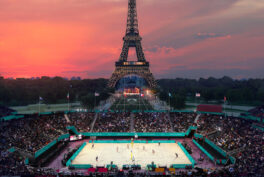
Architecture
Art and Sports: En Route to the Paris 2024 Olympics
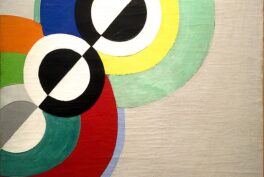
Masterpiece Stories
Masterpiece Story: Rhythms by Robert Delaunay
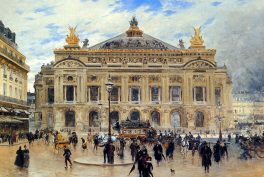
Art Travels
Visit Parisian Landmarks in These 10 Gorgeous Paintings
When people speak of Paris, the Eiffel Tower is probably the first thing that flashes into the imagination. It is the iconic symbol of Paris . Robert Delaunay captures this celebrated structure in his painting, Champs de Mars: The Red Tower . The famous 19th-century building is boldly interpreted through Delaunay’s eyes in a 20th-century Modernist perspective. The Eiffel Tower takes on new meaning but remains the timeless classic we all still love and adore.
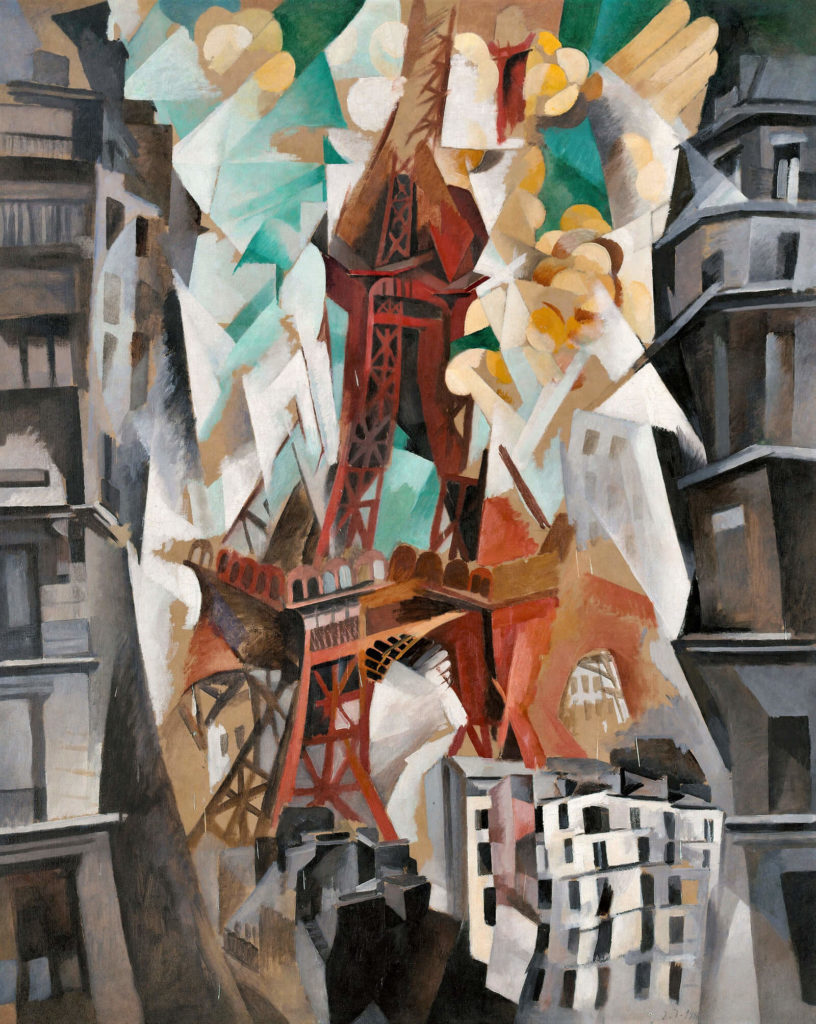
When Robert Delaunay began painting Champs de Mars: The Red Tower in 1911, the Eiffel Tower was only 22 years old. Therefore, it was still considered a new addition to the skyline of Paris. It was completed by the “Magician of Iron”, Gustave Eiffel, in 1889, and was to be revealed to the world at the Exposition Universelle , or World’s Fair. The Eiffel Tower was immediately striking as the world’s tallest structure, a title it held for 41 years until 1930. It is constructed of wrought iron and stands 1063 feet above the city.
It was also a shocking example of the rising prominence of realist, rationalist, and functionalist architecture that was spreading throughout the world. No longer was a building’s form and function hidden behind decorative façades. Now its structural integrity could be boldly displayed as part of its overall appearance. The Eiffel Tower was a massive symbol of the rapidly urbanized and industrialized society of Paris.
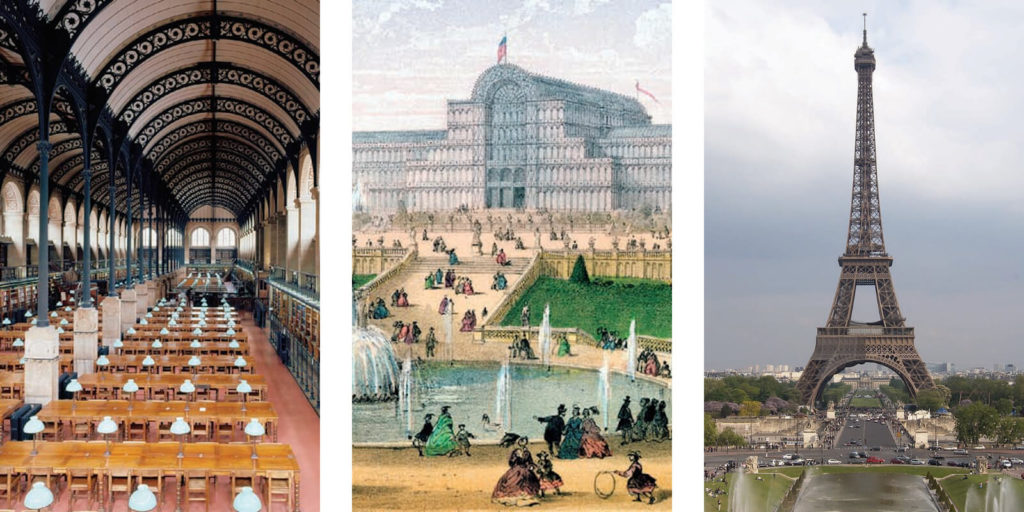
The 19th century was a time of massive changes, especially in Paris. For 30 years, Baron Haussmann was literally destroying and rebuilding history. Architects Henri Labrouste and Joseph Paxton were building skeletal, iron structures such as the Bibliothèque Sainte-Geneviève (1843-50) and the Crystal Palace (1850-51). The Eiffel Tower was the next step in this architectural progression towards Modernism .
Its open-frame body with iron girders was a dramatic departure from the Neoclassical styles of the early 19th century. However, despite its dramatic design and initial rejection by the Parisian “elite”, it quickly became a symbol of 19th-century Paris. It stood for the city’s traditions, beliefs, hopes, and dreams.
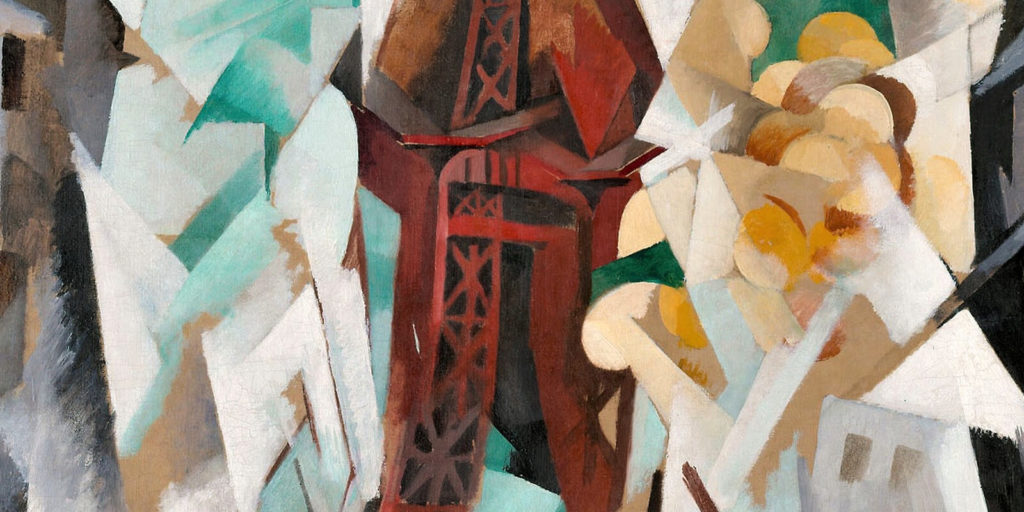
Robert Delaunay’s Champs de Mars: The Red Tower may depict a 19th-century cityscape, but not in the traditional 19th-century style of painting. His painting is thoroughly Modernist and rejects conservative and realistic depictions of the Tower. He does not aim to portray it as the eye sees it, but to depict its essence, character, and form.
It is a painting rejecting linear perspective and realistic shading and is not photographic in any sense. It embraces the dissection of forms, shapes, and colors by holding to most of the tenets of Cubism . This is an art form proudly supported by famous artists like Pablo Picasso and Georges Braque . However, Robert Delaunay is not simply a follower of Cubism. He embraces dramatic colors following the school of Orphism, which consists of fantastically vibrant colors. Cubism, however, tends to follow a more somber color palette of browns and blacks. Orphism holds hands with Cubism but is not married to it.
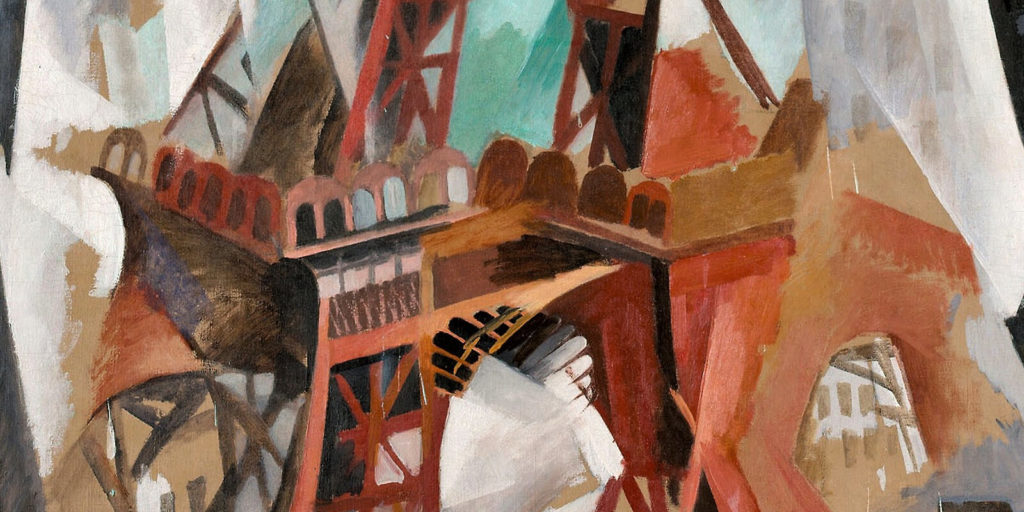
The Eiffel Tower was not always the bronze color it is today. It has been painted 18 times and in many colors including red-brown, yellow-ocher, and chestnut-brown. When Champs de Mars: The Red Tower was painted, the tower was red-brown, which is why the Eiffel Tower dominates the center of the canvas in its bold shades of red and orange. It sharply contrasts the grey and white buildings surrounding its base and flanking its sides. The homogeneous buildings act as a frame for the Tower, and this framing augments its importance in the scene.
The Eiffel Tower is in fragments, a collection of colorful splinters; and like the shards of a broken mirror, the Tower’s pieces still retain some of their original character. We can tell that we are looking at the Eiffel Tower through the scene’s implications and not only through its actual appearance. The Tower’s shards loosely collect into a familiar outline while the brackets and girders of its feet and body are loose and sporadic. Its platforms imply its stories, but they are tilted and unstable. Everything speaks of the actual Eiffel Tower without capturing its photographic appearance.

Robert Delaunay’s Champs de Mars: The Red Tower has a multitude of rhythms and patterns; such as the lines that repeat themselves throughout the scene forming sympathetic and antagonistic patterns. Similar colors are in harmony, while dissimilar colors are in dissonance. It is as though bright strokes break into a wide spectrum-like light that is passing through a glass prism.
The diagonal lines of the Eiffel Tower repeat in the parallel lines of the blue sky, and these lines contrast with the vertical and horizontal lines of the surrounding buildings. The red and orange hues play among themselves creating depth and interest. The Tower’s colors also stand out against the somber and muted shades of the grey and white buildings. The grid of windows and ledges further add to the Tower’s dynamic structure. This, by far, makes the Eiffel Tower the most eye-catching element of the painting since it has so much contrast from its environment.
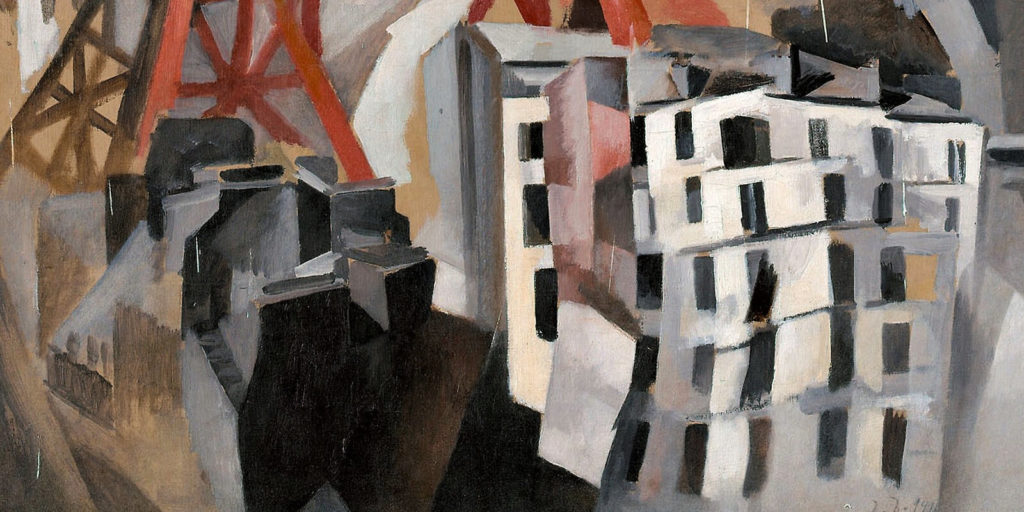
This important artwork also imparts a social timeline. When Champs de Mars: The Red Tower was completed in 1923, France was forever changed; World War I had ravaged humanity and taken countless lives. The be lle époque or “beautiful period”, lasting from 1871 to 1914, was officially over; and a France of optimism, of peace, and of prosperity was killed alongside millions of soldiers during the war .
A sense of innocence and naivety was lost, and a more savage and destructive world was revealed. Shell-shock was real, and it reverberated throughout the paintings of the period. The violent motions of shape and color chosen by Robert Delaunay in this piece reflect the social collapse of the old order. The Tower still stands in the painting, but it is broken and fragmented, just like post-WWI France. Like a favorite vase that is smashed and glued back together, post-WWI society could never be as it was before the war. Despite it appearing whole again, the cracks will always be visible and present.
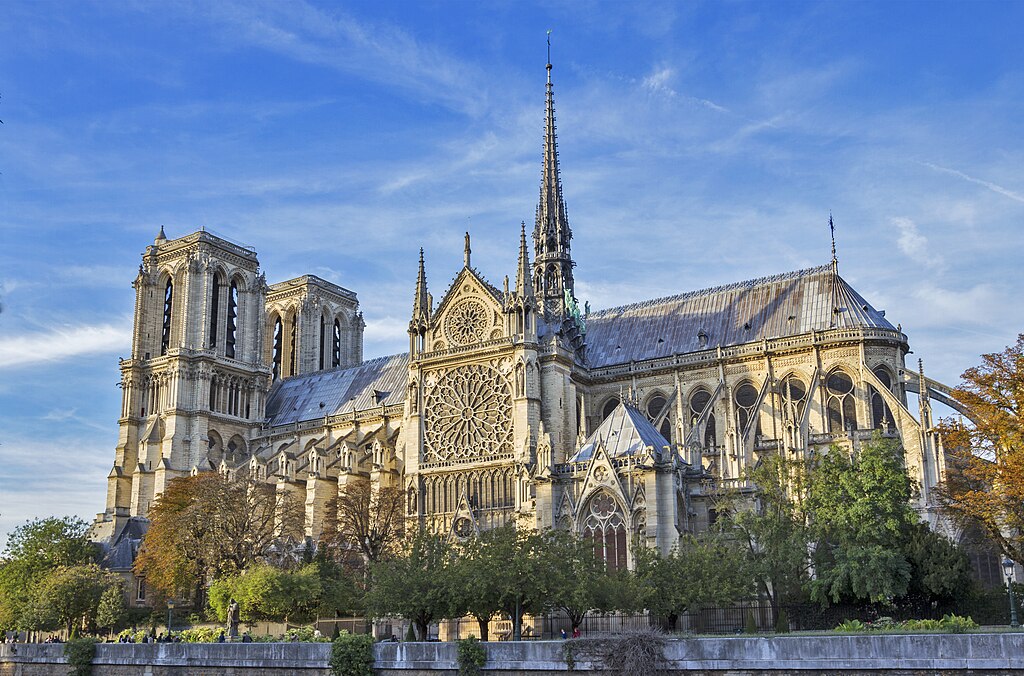
Robert Delaunay painted Champs de Mars: The Red Tower during a period of great social, economic, and political transition. Architecture was rapidly evolving, society quickly changing, and countries swiftly rebelling. French Orphism and Cubism influenced Italian Futurists and German Expressionists . The Eiffel Tower had overtaken Notre-Dame as the symbol of Paris, and the Jazz Age had overtaken the belle époque. Change was the spirit of the age.
Robert Delaunay’s Champs de Mars: The Red Tower is a masterpiece in capturing this spirit. It reflects on the past while it also views the present and hopes for the future. The Art Institute of Chicago is blessed to have such a great work among its collection. And you should view it the next time you are in the Windy City. You will not regret it.
Bibliography
Beckett, Wendy, Patricia Wright, Sister Wendy’s 1000 Masterpieces, London: Dorling Kindersley Limited, 1999.
Champs de Mars: The Red Tower , The Art Institute of Chicago Online Collection. Accessed May 20, 2020.
Charles, Victoria, Joseph Manca, Megan McShane, and Donald Wigal, 1000 Paintings of Genius, New York, NY: Barnes & Noble Books, 2006.
Field, D. M., The World’s Greatest Architecture: Past & Present, New York City, NY: Barnes & Noble Books, 2002.
Gardner, Helen, Fred S. Kleiner, and Christin J. Mamiya, Gardner’s Art Through the Ages, 12th ed. Belmont, CA: Wadsworth, 2005.
Painting the Eiffel Tower , La Tour Eiffel, February 10, 2020.
- 19th Century
- 20th century
- Robert Delaunay
Get your daily dose of art
Click and follow us on Google News to stay updated all the time
We love art history and writing about it. Your support helps us to sustain DailyArt Magazine and keep it running.
DailyArt Magazine needs your support. Every contribution, however big or small, is very valuable for our future. Thanks to it, we will be able to sustain and grow the Magazine. Thank you for your help!
James W Singer
James W. Singer is an art historian and fine art photographer. He earned a Bachelor of Arts in Art History from the University of Florida. He later moved to Paris, France. He currently writes “Masterpiece” articles for DailyArt Magazine.
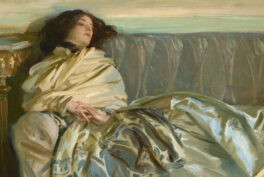
Masterpiece Story: Nonchaloir (Repose) by John Singer Sargent
John Singer Sargent’s Nonchaloir (Repose) is a masterpiece of American Impressionism. It explores a poetic moment of aristocratic...
James W Singer 5 May 2024

Masterpiece Story: Ground Swell by Edward Hopper
Edward Hopper created his peaceful seascape masterpiece Ground Swell with hinted implications of social disengagement, emotional loneliness, and...
James W Singer 21 April 2024
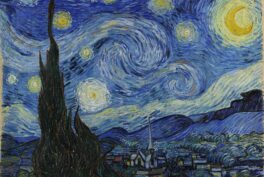
Masterpiece Story: The Starry Night by Vincent van Gogh
During his stay in the Saint-Rémy hospital in southern France, Vincent van Gogh created The Starry Night. It became one of his most recognizable...
Valeria Kumekina 24 March 2024
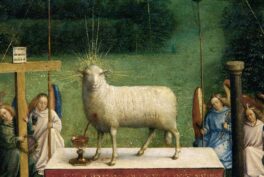
Ghent Altarpiece: The Charmed Life of the Mystic Lamb
Come with us to visit the Van Eyck brothers, their monumental Ghent Altarpiece, and explore 500 years of intrigue, theft and revolutionary painting techniques.
Candy Bedworth 21 March 2024
Never miss DailyArt Magazine's stories. Sign up and get your dose of art history delivered straight to your inbox!
20/21 & Luxury Auctions
Find information and browse our exceptional 20/21 and Luxury auctions:
We apologise that our full website is currently offline. We are looking to resolve this as soon as possible and regret any inconvenience.
Contact details below for help and registration including to register for online bidding:
+44 (0) 20 7839 9060
+1 212 636 2000
+33 (0) 1 40 76 85 85
+852 2760 1766
GENERAL ENQUIRIES

IMAGES
COMMENTS
The Eiffel Tower in Paris, which inspired the series. The Eiffel Tower series of Robert Delaunay (1885-1941) is a cycle of paintings and drawings of the Eiffel Tower.Its main sequence was created between 1909 and 1912, with additional works added up to 1928. The series is considered the most prominent art depicting the iconic Paris tower as well as the most prominent work of Delaunay.
La Tour Eiffel. [1926] An emblem of modernity, the metal tower built by Gustave Eiffel in 1889 fascinated Delaunay and runs through all his work. After breaking it down in a major Cubist series in the early 191Os, the artist glorifies the Eiffel Tower in a range of flamboyant colours underscored by a powerful seen-from-below effect, often ...
Robert Delaunay was one of the most important artists of the 20 th century. A Cubist and Orphist pioneer, he lived much of his life in Paris, as the city surged and became a cultural mecca in the wake of the industrial revolution.Of all the subjects Delaunay painted, the Eiffel Tower was his most enduring - he made a major series of works based on the Eiffel Tower motif from 1909-1912, and ...
Robert Delaunay La Tour (The Eiffel Tower) 1925. The artist and theorist Robert Delaunay used the term "simultaneous contrast" in 1912 to describe the sensations of depth, motion, and harmony he achieved through color effects and a Cubist fragmentation of space. The poet Guillaume Apollinaire referred to the musicality implied in Delaunay's ...
La Tour Eiffel (The Eiffel Tower) With his depiction of the Eiffel Tower, the symbol of Paris built in 1889 as a spectacular example of French engineering, Robert Delaunay produced a shocking scenario of the decline and fall of the modern world. His admiration for industrial progress contrasts with his pictorial destruction of the architectural ...
The more Delaunay painted the Eiffel tower, the more abstracted it became. According to Mark Roesenthal, author of Visions of Paris: Robert Delaunay's Series, by the time Delaunay painted the monument in 1924, the artist had "…studied it from above, and below, inside and out, from near and far, by day and by night.He absorbed its every mood, perspective, and light effect."
Red Eiffel Tower (La tour rouge) Delaunay painted his first Eiffel Tower in 1909 to celebrate his engagement to Sonia Terk. He went on to produce around fifteen versions and the tower became a major motif for artists in recognition of the major role that technological development and innovation had on the first part of the 20 th century. The ...
Robert Delaunay. Tour Eiffel. 1918. Vincent Huidobro. ... Robert Delaunay has 49 works online. There are 10,458 illustrated books online. Licensing. If you would like to reproduce an image of a work of art in MoMA's collection, or an image of a MoMA publication or archival material ...
Robert Delaunay created the large-scale painting Eiffel Tower, the last in a series, in Paris in 1928. Colourfully depicting the Eiffel Tower in Paris from a bird's eye view, it was inspired by photographs taken from aeroplanes. The Eiffel Tower virtually becomes a rocket, seeming to take off from the earth.
Address. 1071 Fifth Avenue New York, NY 10128. (Between 88th and 89th Streets) Get directions.
La tour Eiffel by Delaunay, Robert, 1885-1941. Publication date 1987 Topics Tour Eiffel Publisher Paris : Atelier des enfants et Musée national d'art moderne Collection inlibrary; printdisabled; internetarchivebooks Contributor Internet Archive Language French. 1 v. : Access-restricted-item true
Tour Eiffel est un tableau peint par Robert Delaunay en 1926.Cette huile sur toile représente la tour Eiffel et le Champ-de-Mars.Elle est conservée au musée d'Art moderne de Paris.Robert Delaunay a peint plus d'une cinquantaine de tableaux où la Tour Eiffel est représentée en sujet principal ou en sujet annexe.
Tour Eiffel. (Delaunay, 1911) Pour les articles homonymes, voir Tour Eiffel (homonymie) . Tour Eiffel est un tableau de l'artiste français Robert Delaunay, réalisé en 1911. Robert Delaunay a peint plus d'une cinquantaine de tableaux où la Tour Eiffel est représentée en sujet principal ou en sujet annexe 1 .
Robert Delaunay (French pronunciation: [ʁɔbɛʁ dəlonɛ]; 12 April 1885 - 25 October 1941) was a French artist of the School of Paris movement; who, with his wife Sonia Delaunay and others, co-founded the Orphism art movement, noted for its use of strong colours and geometric shapes.His later works were more abstract.His key influence related to bold use of colour and a clear love of ...
Emblème de la modernité, la tour métallique construite par Gustave Eiffel en 1889 fascine Delaunay et traverse tout son œuvre. Après l'avoir désarticulée dans une importante série cubiste au début des années 1910, l'artiste magnifie la tour Eiffel dans une gamme de couleurs flamboyantes soulignée par un puissant effet de contre-plongée, souvent adopté par les photographes de l ...
Robert Delaunay (1885-1941) retained a muted palette of brown and grey hues in his painting of "The Eiffel Tower" (1909/10). In this colour scheme and his artistic contemplation of multiple viewpoints of objects, the influence of the analytic Cubism of Pablo Picasso (1881 - 1973) and Georges Braque (1882-1963) is visible. Delaunay's formal language resulted from the extension and acceleration ...
The Eiffel Tower. Robert Delaunay French. 1926 Not on view View more. Due to rights restrictions, this image cannot be enlarged, viewed at full screen, or downloaded. ... Robert Delaunay (French, Paris 1885-1941 Montpellier) ca. 1918. How Lithographs are Made
Eiffel Tower. c. 1925 Robert Delaunay (French, 1885-1941) This tall, narrow canvas presents the Eiffel Tower rising above historical sites and monuments of Paris, and crowned by vortices of red, yellow, blue, and green. Robert Delaunay derived the attenuated nude figure on the left from a postcard showing an ancient fresco of the Three Graces ...
Robert Delaunay's "Eiffel Tower" represents this famed Parisian landmark, which was a symbol of modern technology in the early 20th century. The dark steel structure has been transformed into rich tones of yellow, orange, and lavender; the surrounding gardens are abstracted patterns of green and yellow. Influenced by fauvism, an art ...
When people speak of Paris, the Eiffel Tower is probably the first thing that flashes into the imagination. It is the iconic symbol of Paris. Robert Delaunay captures this celebrated structure in his painting, Champs de Mars: The Red Tower.The famous 19th-century building is boldly interpreted through Delaunay's eyes in a 20th-century Modernist perspective.
Robert Delaunay (1885-1941) Tour Eiffel signed 'r. delaunay' (lower right) oil on canvas 77 1/8 x 44 7/8 in. (196 x 114 cm.) Painted in Paris in 1926 . ... In Tour Eiffel, both Delaunay's abstract style and the emphatic figuration of the Parisian cityscapes is on bold display in an image which is a searing blaze of modernity.